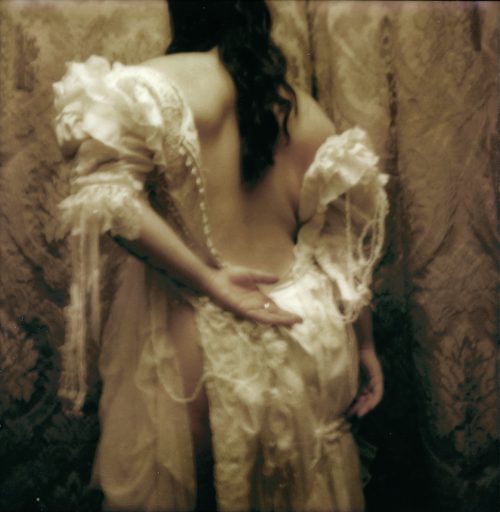
Nora Hansen, with contributions by Brieke Drost, Paula Erstmann, Kinke Kooi, Mary Lake, Josefine Reisch
I am the house, I said
Project Info
- 💙 Omstand - Space for Contemporary Art
- 💚 Lisa Klosterkötter
- 🖤 Nora Hansen, with contributions by Brieke Drost, Paula Erstmann, Kinke Kooi, Mary Lake, Josefine Reisch
- 💜 Lisa Klosterkötter
- 💛 Django van Ardenne
Share on
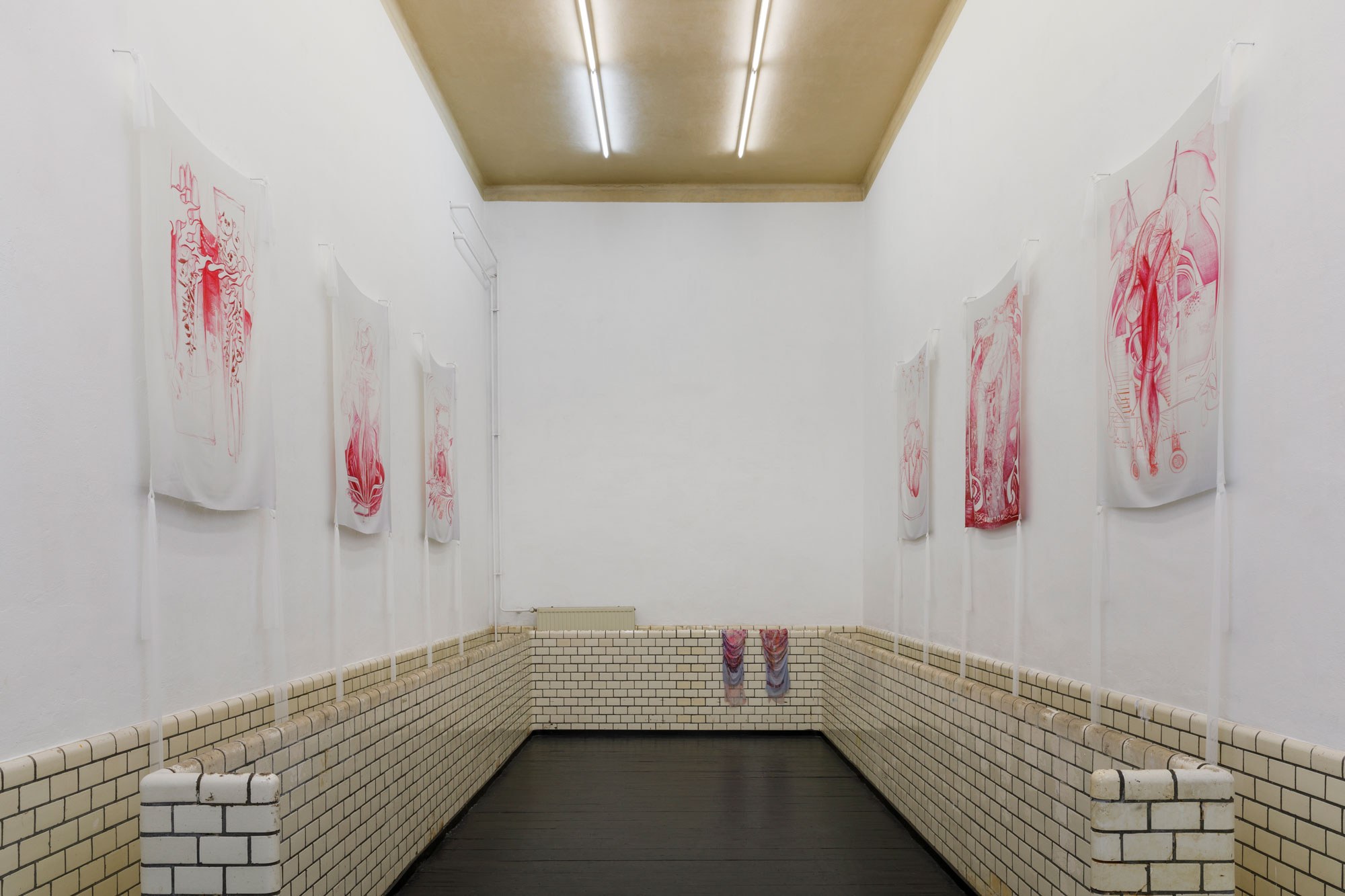
Nora Hansen, I Am The House, I Said, 2024, Digital print on U-Circular Silk Satin and U-Circular Mesh, Metal
Advertisement
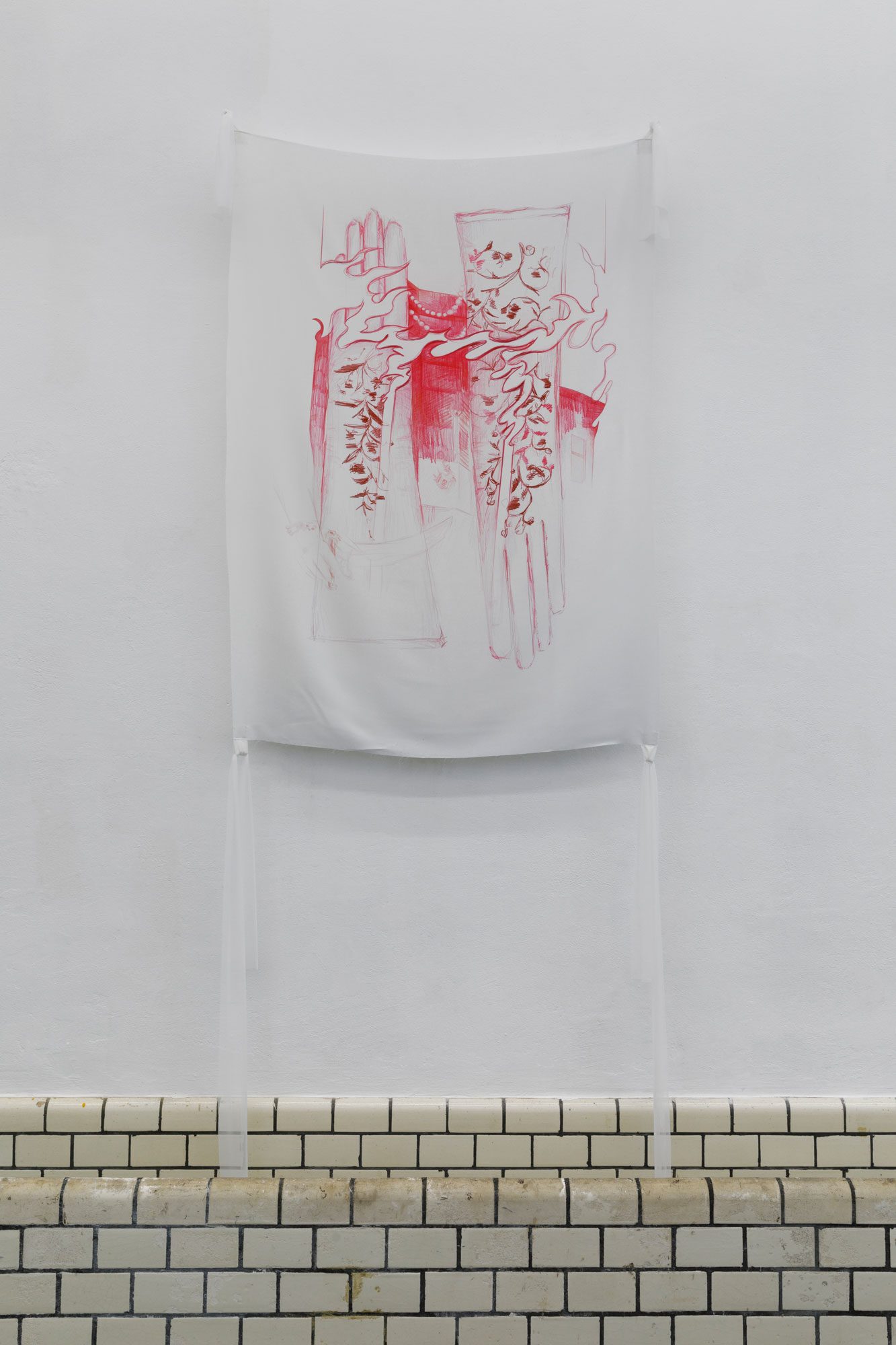
Nora Hansen, the sand, from which they carefully carve their worship, 2024, Digital print on U-Circular Silk Satin, U-Circular Mesh, Metal
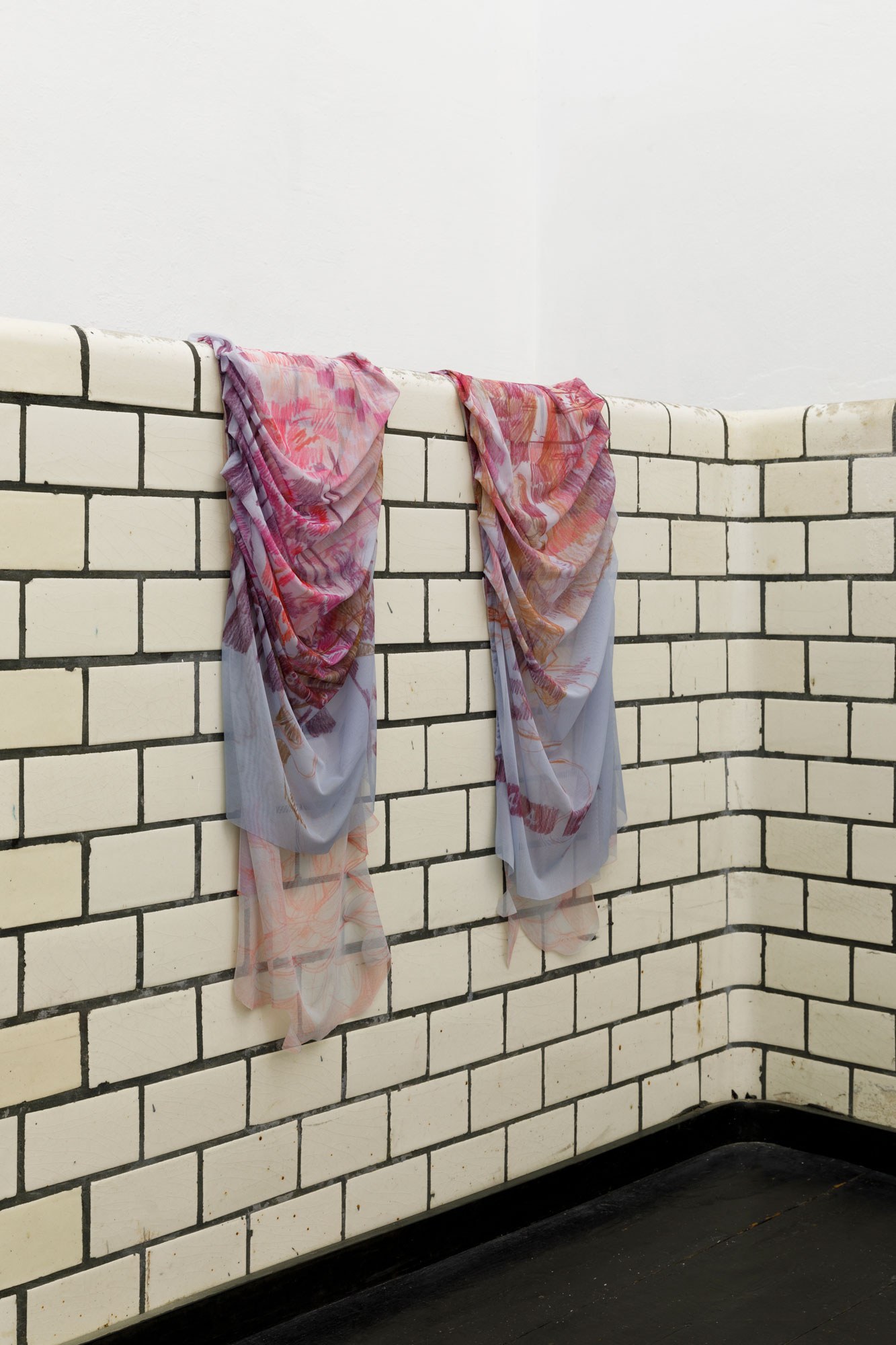
Nora Hansen, the pleats of matter, and the folds in my soul (pant), 2024 Digital Print on U-circular Mesh
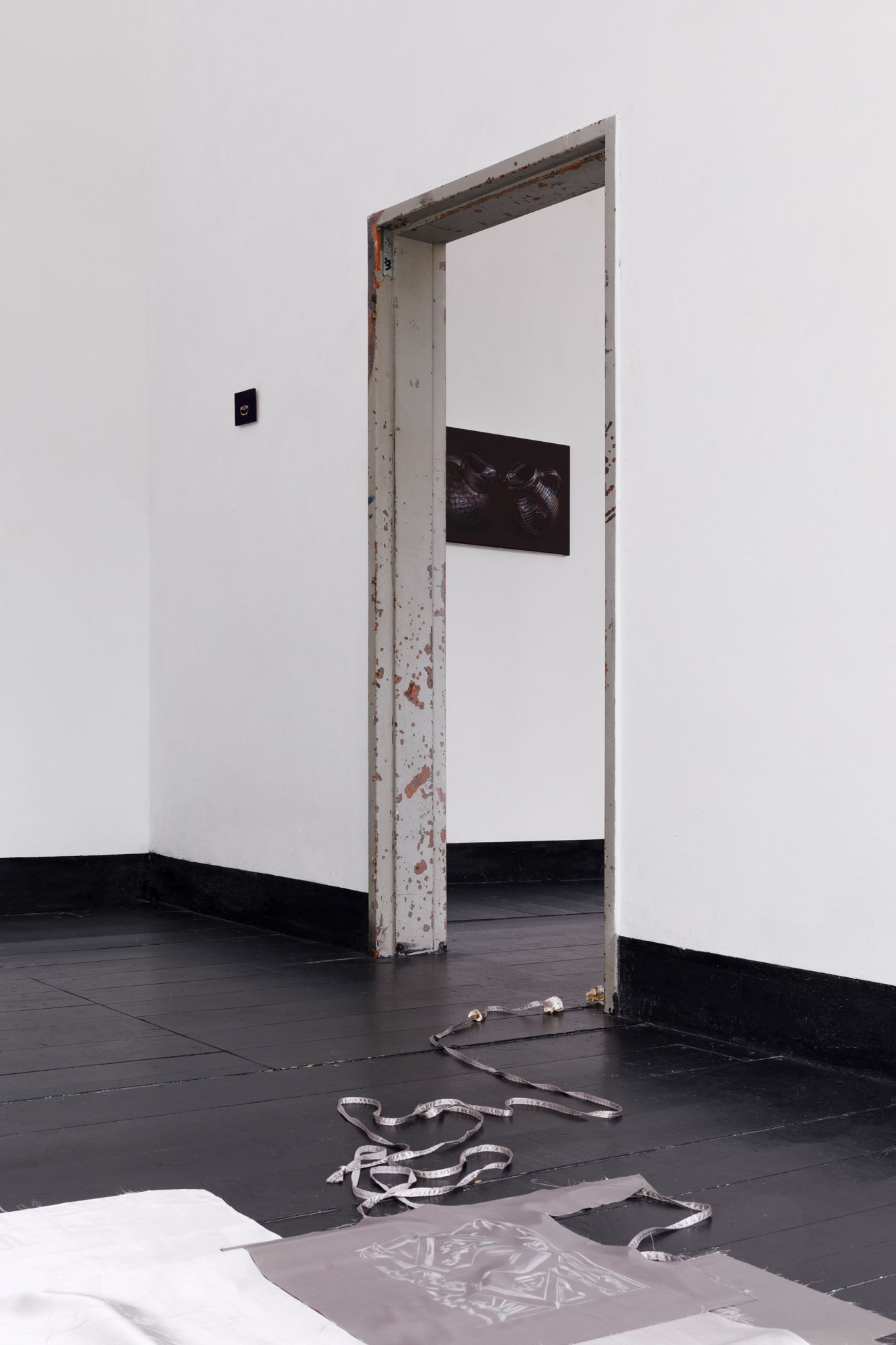
I am the House, I said, 2024, Installation view
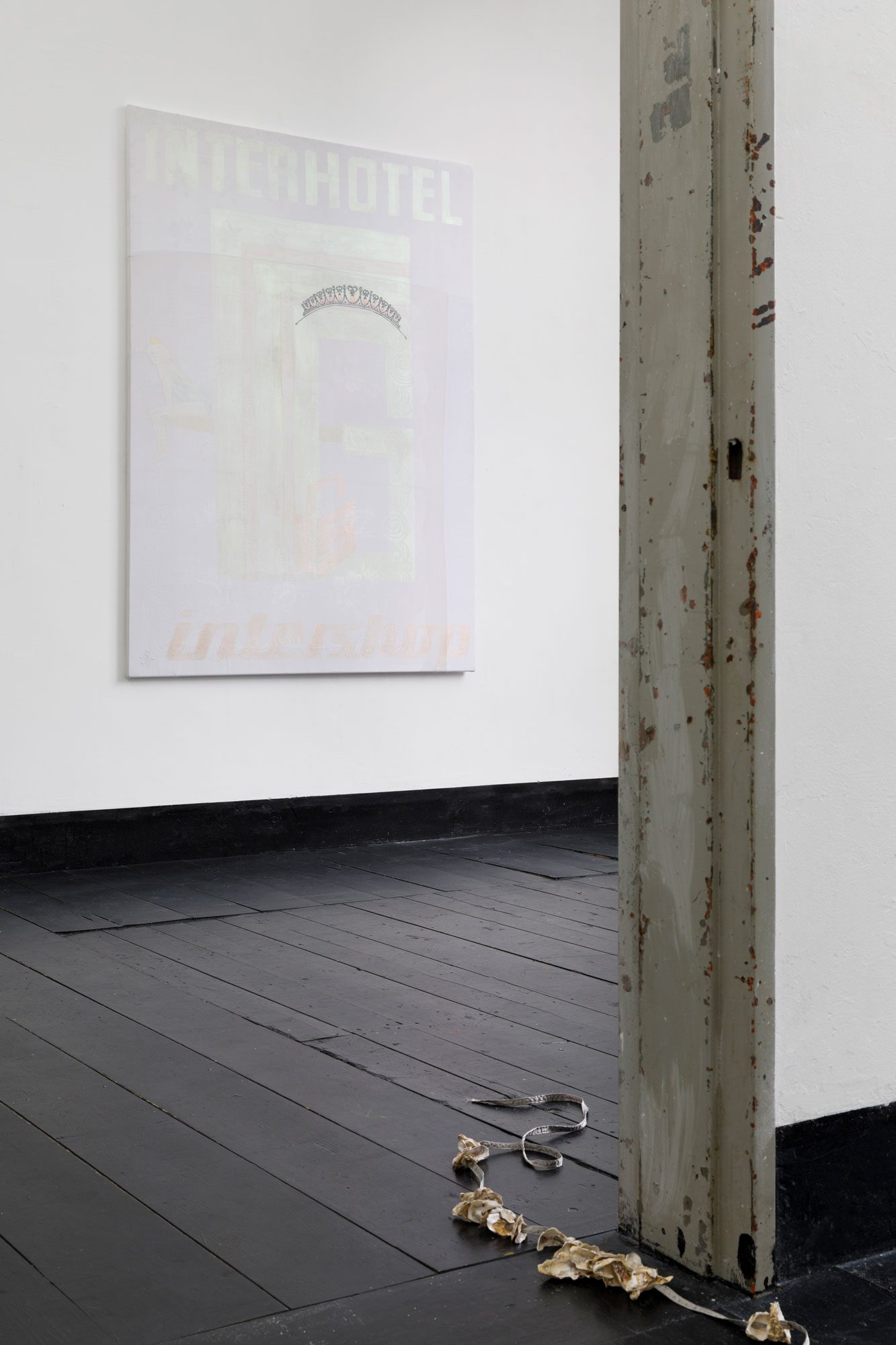
Josefine Reisch, Inter Intern, 2023, Oil and acrylic on cotton damask

I am the House, I said, 2024, Installation view

Nora Hansen, my stony skin and mettle bones, 2024, polychromos crayon on polyester satin, printed mesh, sea shells, 2024
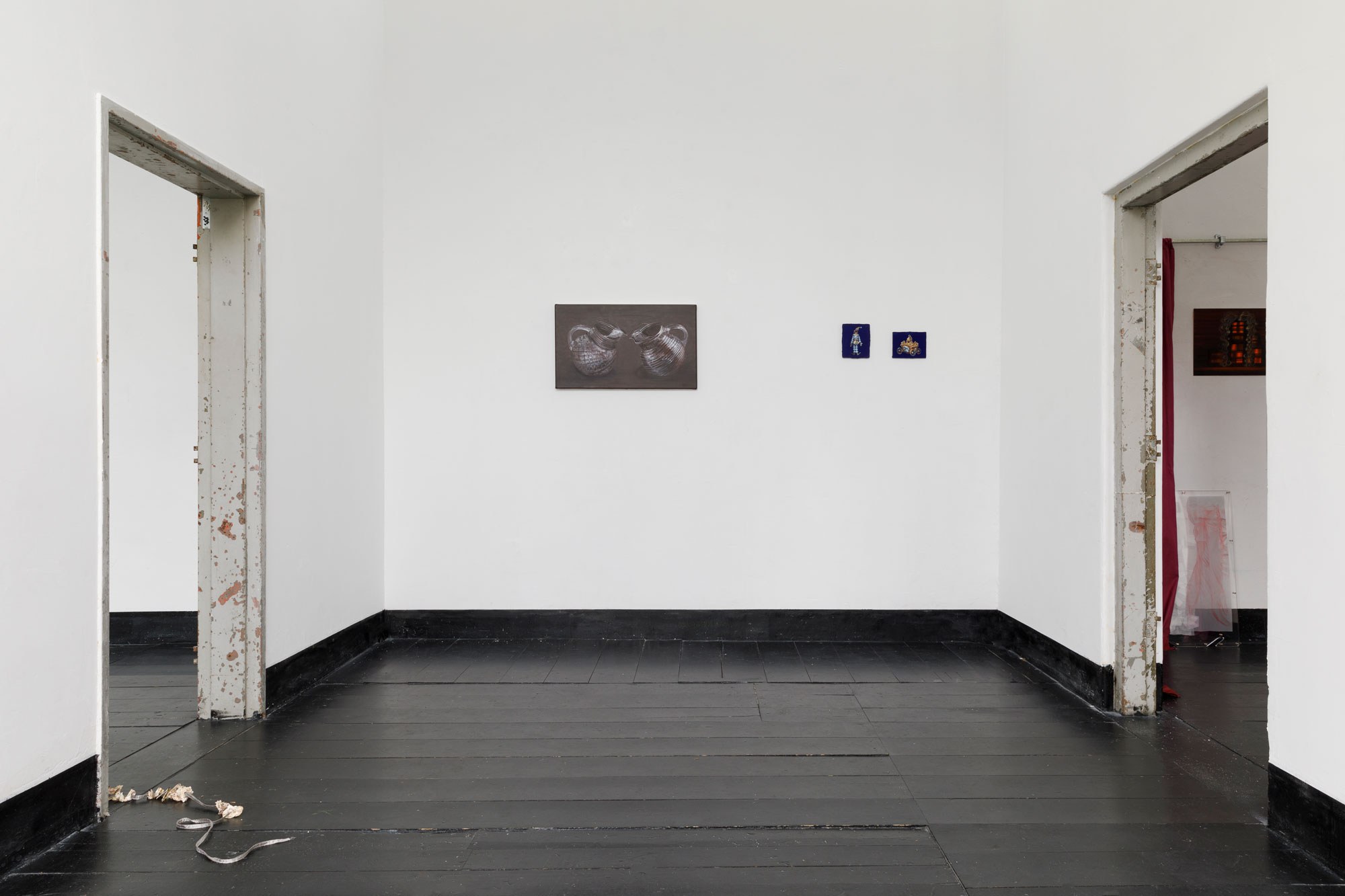
I am the House, I said, 2024, Installation view

Brieke Drost, Pierrot, 2021, Tempera on panel on copper; Brieke Drost, Carriage, 2023, Tempera on panel on copper,
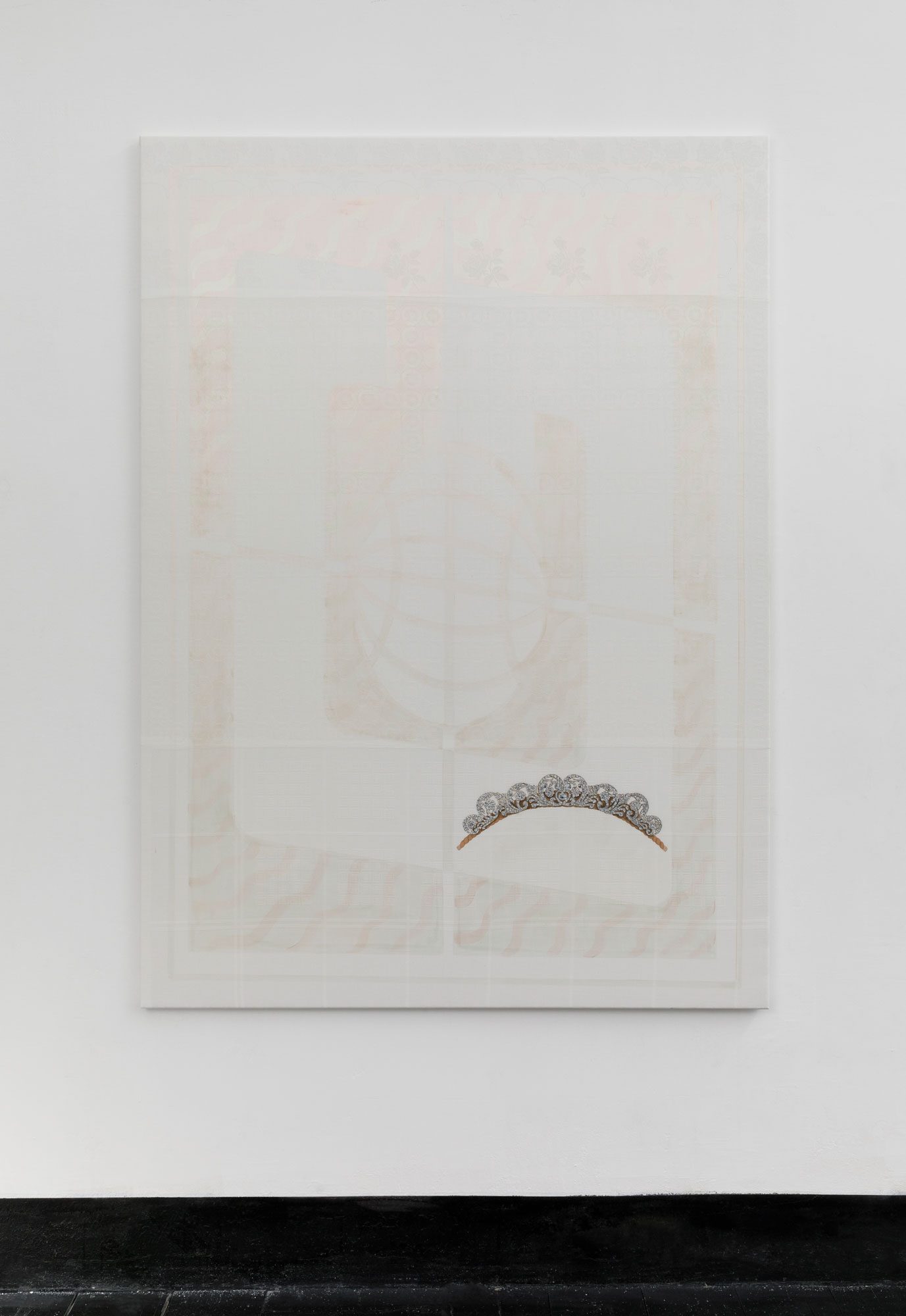
Josefine Reisch, Shine bright... tonight, 2023, Oil and acrylic on cotton damask
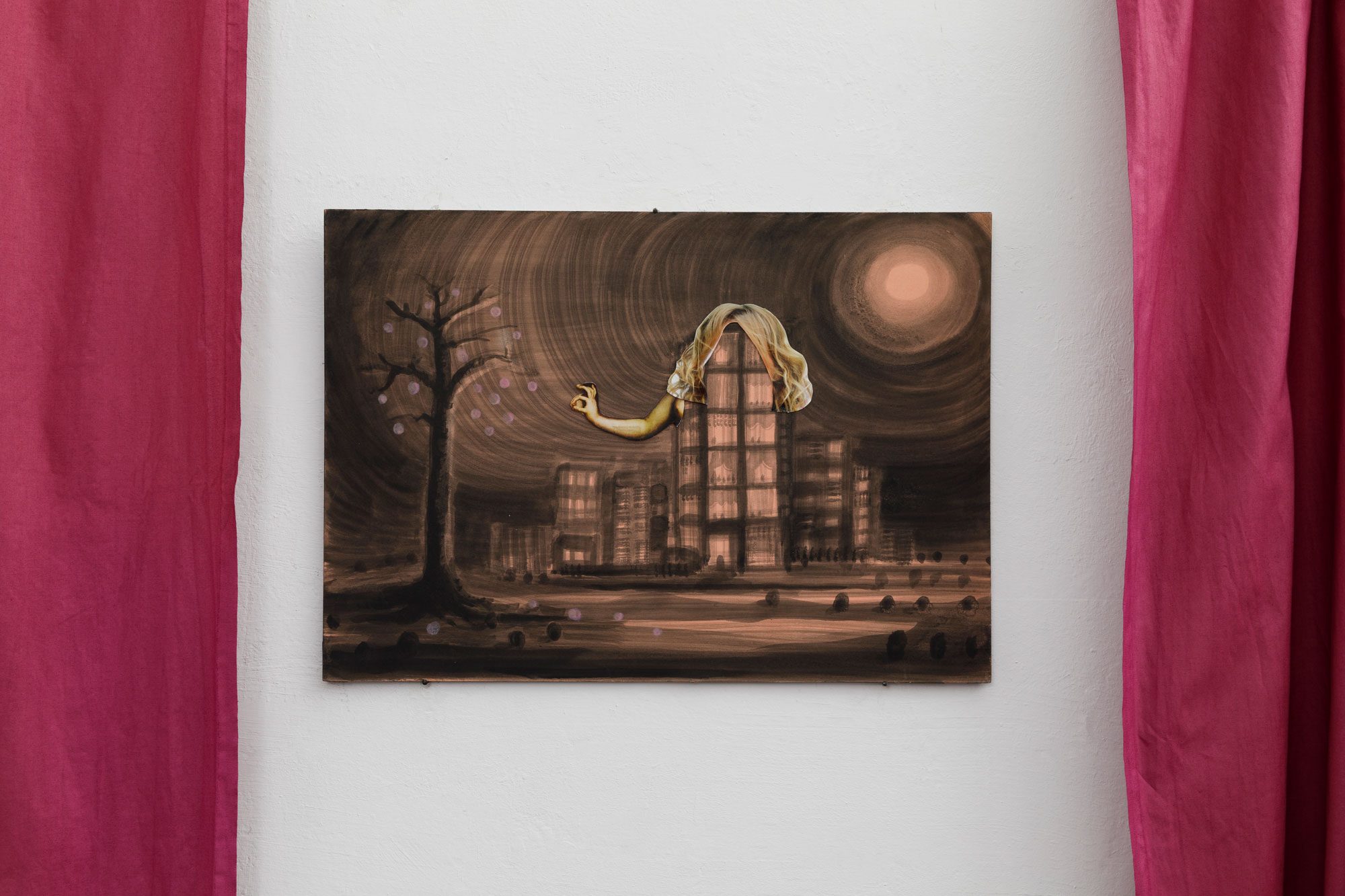
Kinke Kooi, Housewife (1), 2008, acrylic, collage on paper
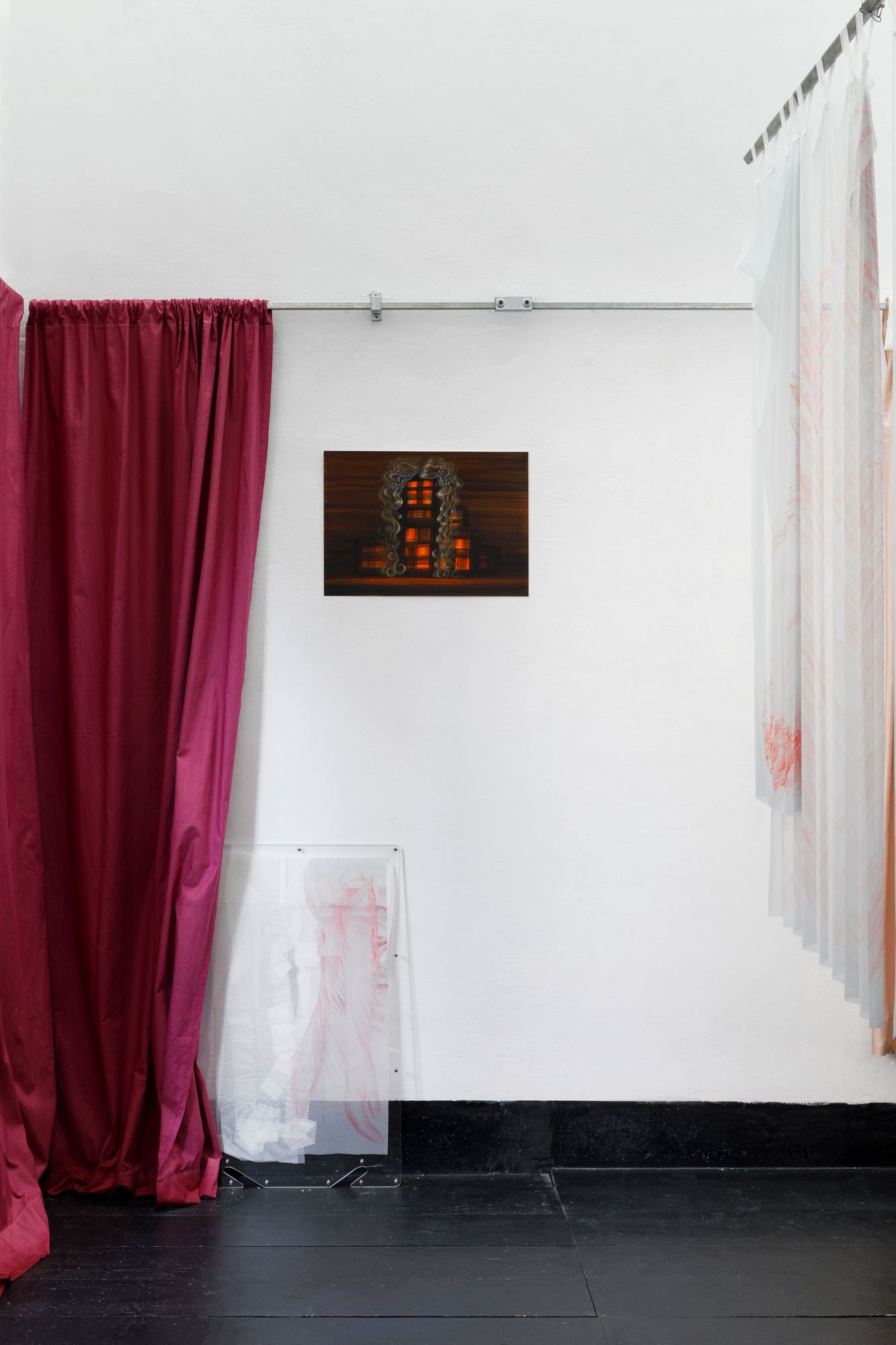
I am the House, I said, 2024, Installation view

I am the House, I said, 2024, Installation view
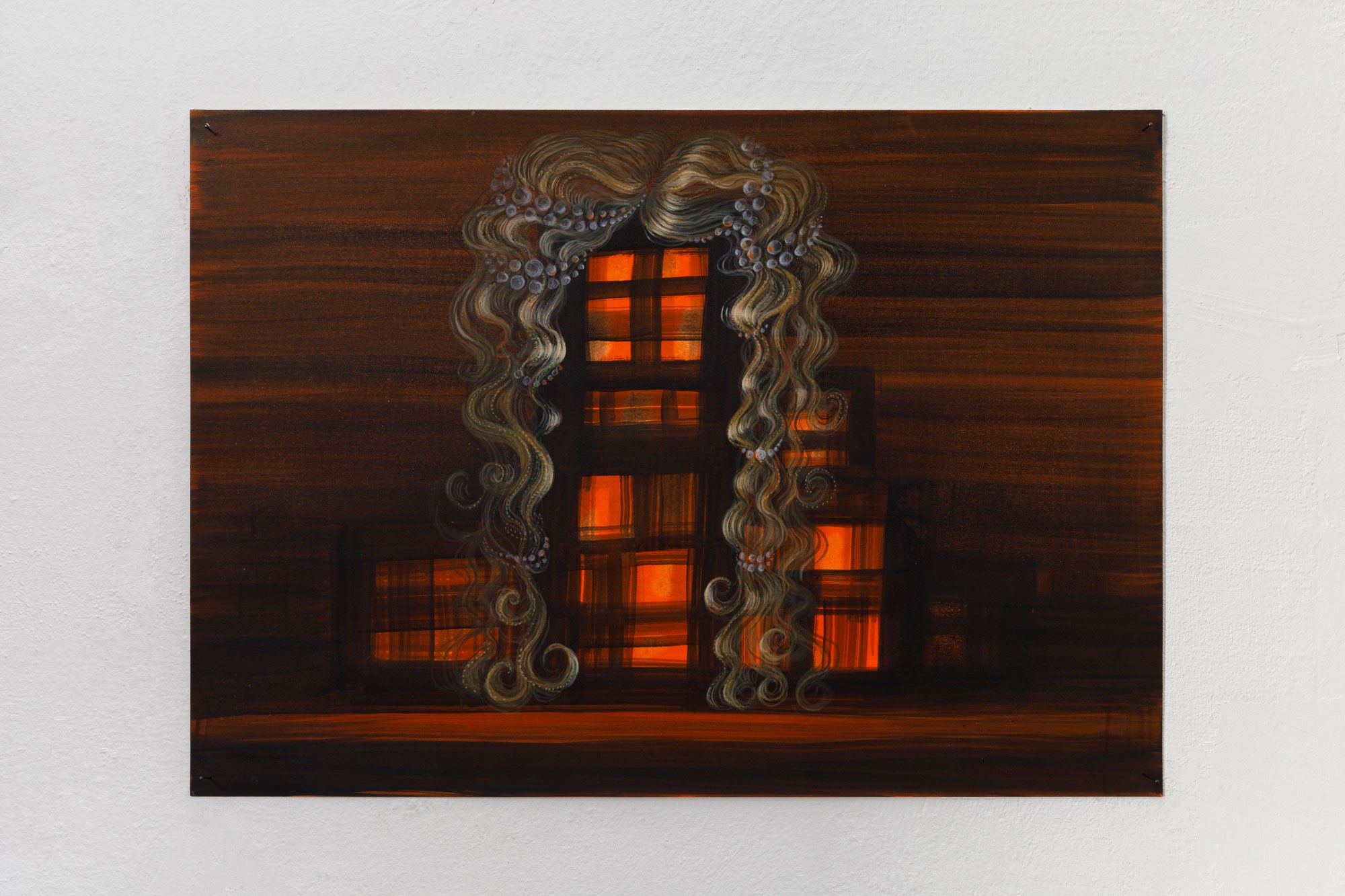
Kinke Kooi, Let me comfort you, 2007, acrylic on paper
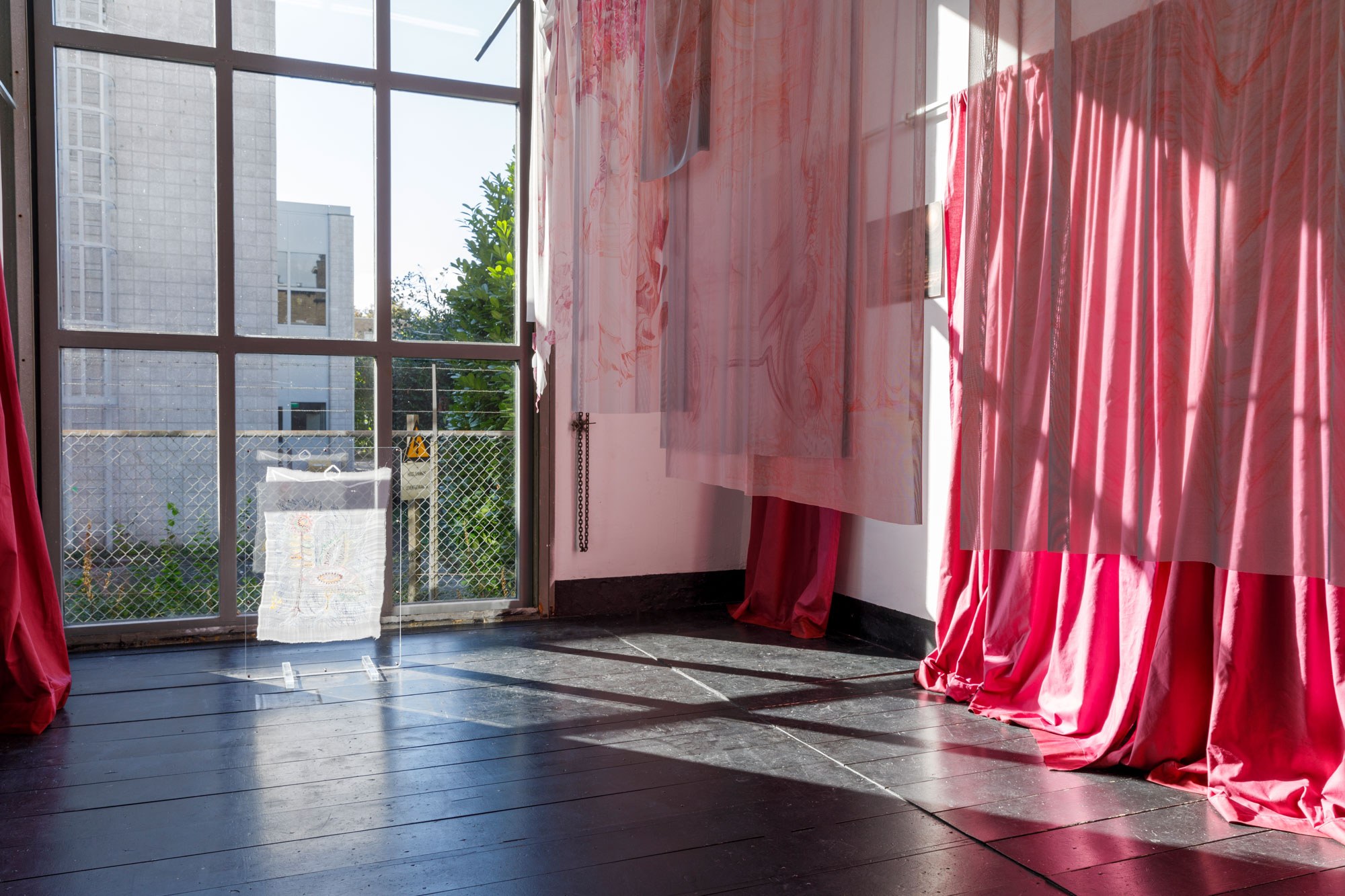
I am the House, I said, 2024, Installation view
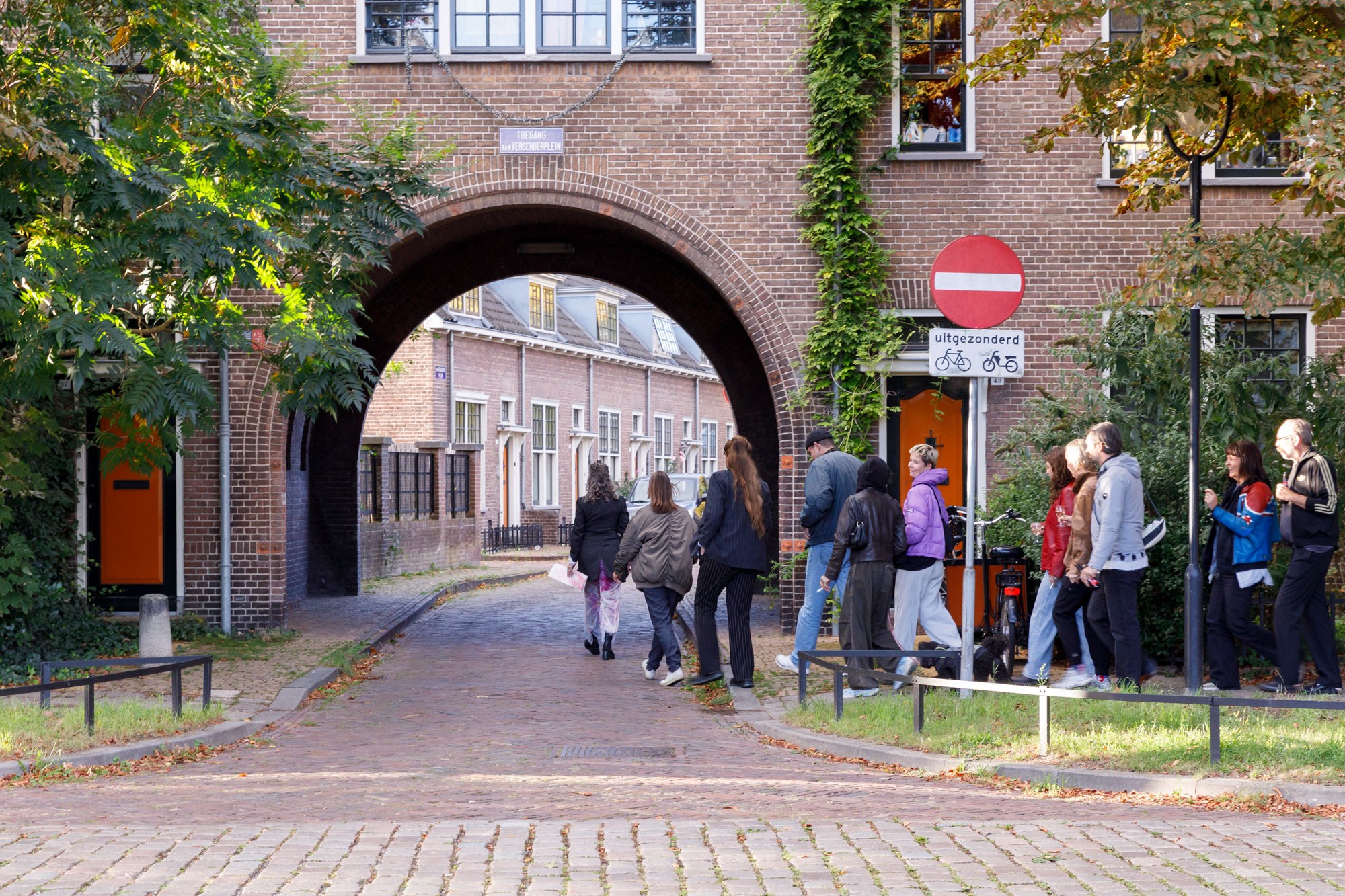
I Am The House, I Said, 2024, Documentation Performative Walk
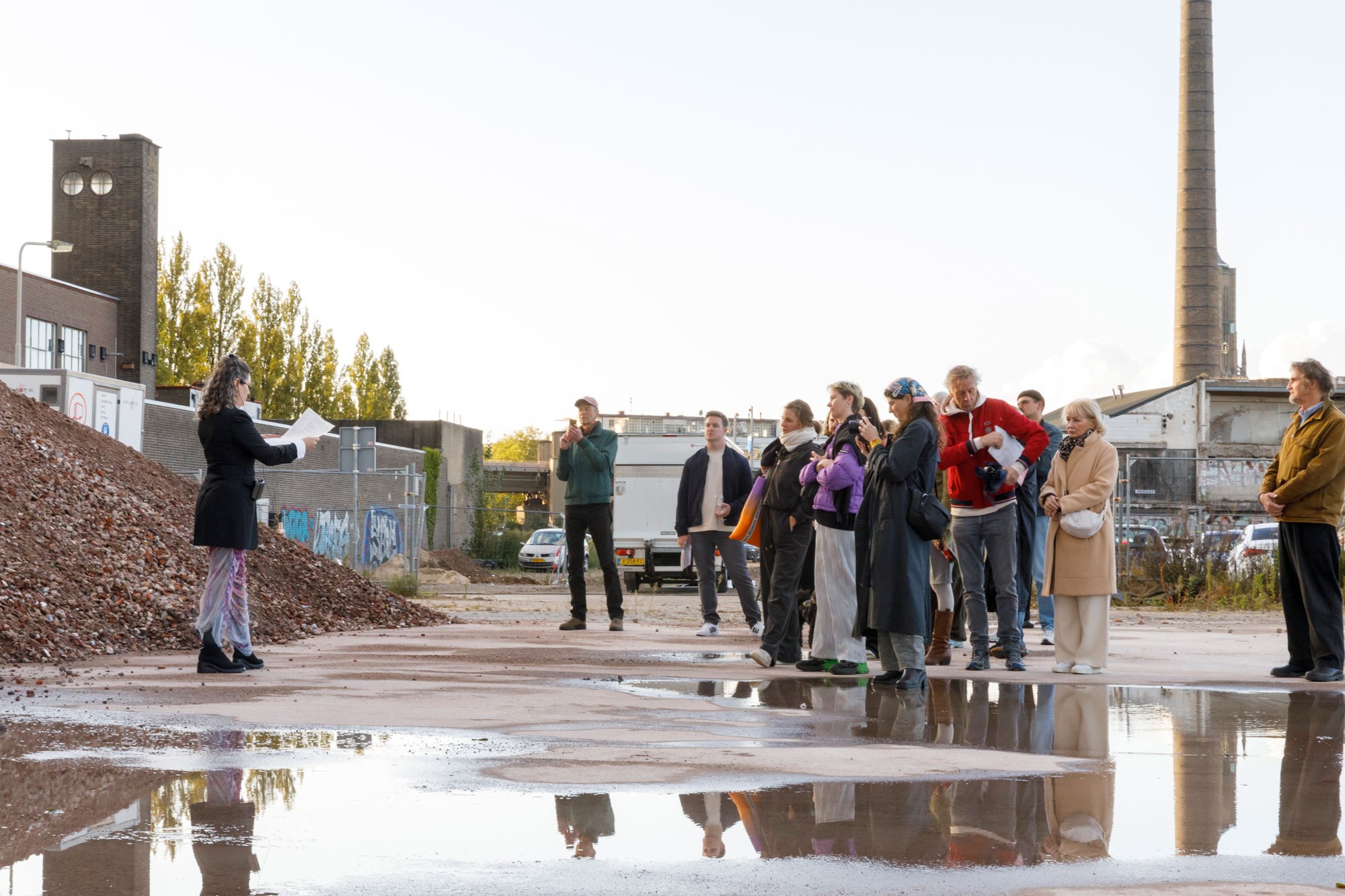
I Am The House, I Said, 2024, Documentation Performative Walk

I Am The House, I Said, 2024, Documentation Performative Walk

I Am The House, I Said, 2024, Publikation, Graphic Design studio Corine van der Wal

I Am The House, I Said, 2024, Publikation, Graphic Design studio Corine van der Wal
The Powerhouse
Omstand is located in a former power station that began operations in 1927 and has been established as a platform for contemporary art since 2015. It is located in an industrial area on the edge of the northern half of Arnhem, which is currently undergoing a major transformation: many old buildings and ruins are in the process of being demolished. Buildings that were once engine and milk factories, granaries and warehouses. A few buildings have been converted and renovated and now house offices, studios and workshops, but most of them are vacant or no longer exist. The site is bordered by the Rhine, which flows through Arnhem and is crossed by a historic bridge within walking distance of Omstand. Some of the former industrial buildings are lined with reliefs from the 1920s and 1950s, which depict the contents of their former industrial activity in a pictorial, sometimes coded, sometimes very accessible way. What happened inside is turned outwards, growing out of the stone walls, emerging from them like an invasion to the outside, a figuration, a representative visualisation of labour and its products. Here, through the means of art, the voice of the so-called second industrial revolution on the threshold of the post-industrial age in the 20th century can be heard. A transitional phase that is still characterised by a constantly intensifying dynamic between nature and technology. In view of these reliefs and the industrial wasteland that surrounds them, human and machine are moving miles away from each other and at the same time have grown into an unconditional symbiosis in the context of digitalisation.
Regarding the Onderstation P.G.E.M. power station, there are several stone scenes, symbols and figures whose bodies and gestures appear to be charged and are obviously electrified - their hair is literally standing on end. The lightning-like, jagged shapes are reminiscent of the visual language of pictograms, where lightning usually indicates danger, or of comics and manga, where similar symbols can symbolise anger, strength, empowerment or even enlightenment, but also speed, crashes and explosions.
Even without knowing about the expressive reliefs that surround Omstand and its history as a former power station, you will find the current building to be a lively and dynamic place for art, encounters, socialising, networking and support.
I am the house, I said is a story, a narrative starting point that artist Nora Hansen developed for her exhibition in Omstand, which introduces visitors to a scenario that guides them through the exhibition and its various chapters and phases. The narrator takes the perspective of the house and reports on a utopian, fantastic event. The exhibition's narratives are characterised by shifted temporalities, past and future merge with one another: Told from the perspective of the former power station, "I am the house, I said", recounts the arrival of an intricate glass ship to earth. After a period of non-communication, the ship appears to make contact in the shape of dreams, tapping the house's stony memory for answers to take home, leaving a pile of garments, drawings and other derelict objects in its wake. (Nora Hansen)
Under the title I am the house, I said, newly produced and existing works by Nora Hansen are presented, including drawings on paper and textiles, digital prints on fabric, embroideries, garments, objects and installations, which, united in an overarching thematic bracket, form the site-specific narrative. The exhibition also includes paintings and drawings by artists Brieke Drost, Kinke Kooi and Josefine Reisch as well as a sound installation by Mary Lake and a culinary intervention by Paula Erstmann. A performative walk through the neighbourhood surrounding Omstand will take place at the opening and finissage, which visitors can follow independently during the exhibition using a map (see attached leaflet).
The exhibition extends across the six exhibition rooms at Omstand and follows a reading direction that condenses chronologically towards the back. The glass pavilion in the courtyard acts as a prologue or antechamber. It is followed by the tiled battery room, which seems to prepare for the upcoming content with its clear, cool and self-contained structure. The turbine space consists of three rooms stacked one behind the other which merge into each other, offering space for connecting, dividing and sequencing, as well as anticipating and reverting, because of its spacious and simultaneously angular nature. A few hundred metres from the main building, at the end of Broekstraat, stands the little transformer house, a former transformer station which, due to its original use, functions symbolically as a bridge or catalyst into the surrounding neighbourhood. A video work is exhibited here that provides insights into the project's development processes, conceptual background, references and site-specific research.
In her works, Nora Hansen explores the entanglement and interconnectedness of systems. The new drawings in the series I am the house, I said are evidence of a tangled weave, an overloaded network of numerous references, levels of meaning, ordering systems, principles of measurement and structuring, synaptic connections and inextricable entanglements. On display are mushrooms, knitting charts, circuit boards, details of elegant garments as well as floral and physical fragments, which come together to form an opulent flood of different layers of images and meanings, which often condense in a symmetrical axis to form an ornamental climax that is intended to be reflected, complemented and manifested in a protective frame.
The fragmented houses in Kinke Kooi's drawings are surrounded by a glowing, shimmering aura. They glow into the darkness from within. The personified house here is the magical retreat of a witch, an inhabited body, a place full of shimmering treasures, such as the ones Brieke Drost creates in her small-format paintings. Josefine Reisch's paintings deal with the concept of the dowry, a transaction of gifts and household goods as part of a marriage. An exchange from house to house, intended to settle the new foundation of a household in the context of traditional values.
In the furthest room of the turbine space, Mary Lake's composition lures us into the innermost part of the personified house, deep into its body, which is filled and warmed up with food in the course of Paula Erstmann's culinary intervention.
The historical architecture of Omstand encourages us to reflect on the origins and components of energy generation and traction, energy distribution and grids.
Energy is released in various forms, as a dynamic process energising a structure. What are the energy sources of artistic production and what are the structures and networks that support, favour and drive it? In a capitalist, neoliberal society, what facilitates subversive forms of networking and creative community building?
The Omstand ‘house’ is fuelled by the energies of the artworks on display. In the context of I am the house, I said, it is the exchange of artistic voices with each other and with the house itself that meets in the spaces, occasionally merging or complementing each other in dialogue - a connection that has already sparked fruitful and delightful sparks in past processes, previous collaborations and friendships between the participants.
Just like the Rhine, not far from Omstand, connects the cities of Cologne and Arnhem with its powerful current in undulating serpentine lines, the energies of the artistic works are captured in Omstand's Powerhouse, where they are brought together for a moment, only to soon let them flow out again, whether individually or together.
Text: Lisa Klosterkötter
Translation from German into Dutch and English: Willeke van Ravenhorst
Lisa Klosterkötter




